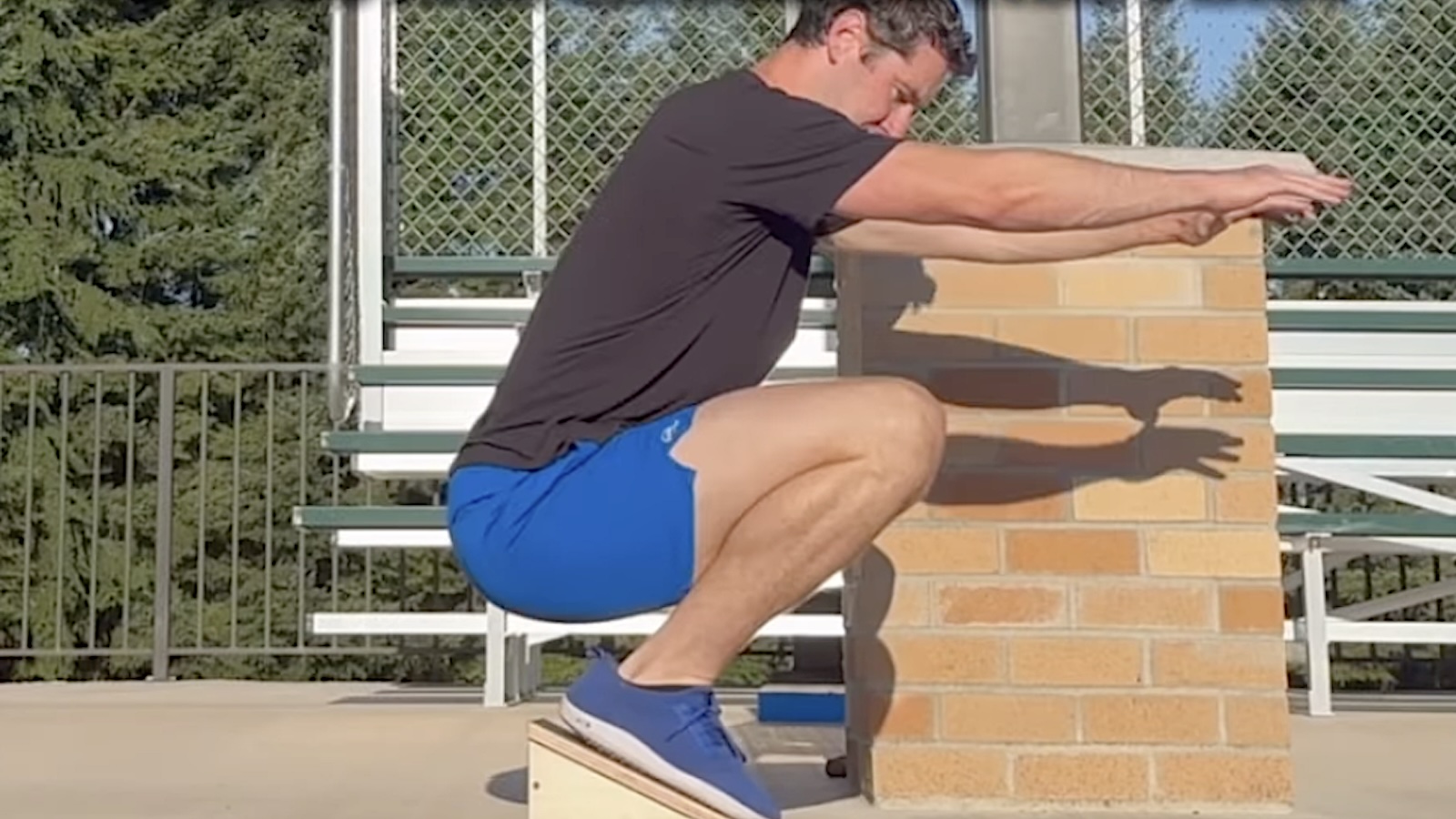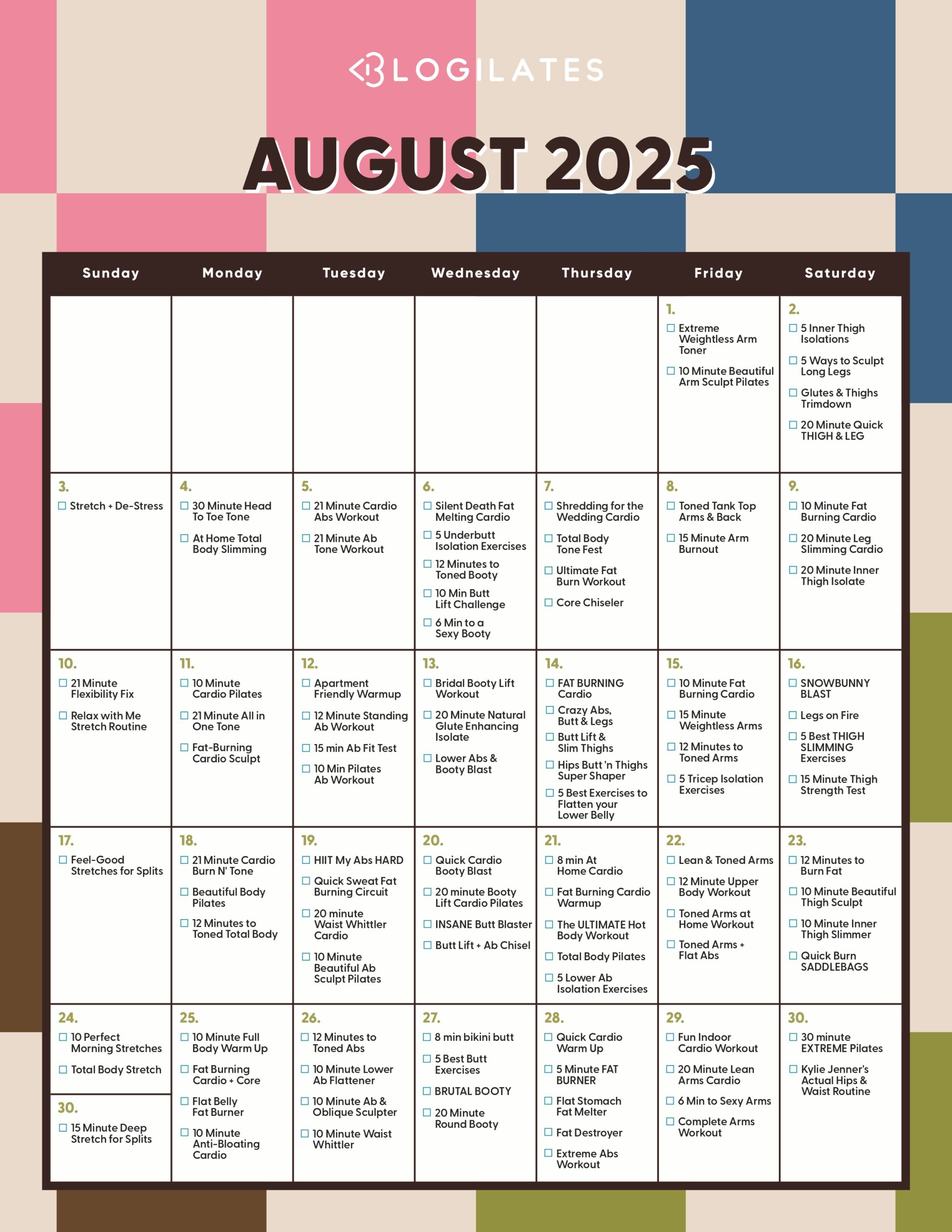A hack for healthy knees and better performance.
The knee joint ruins more athletic careers and performance endeavors than any other joint. (1) After suffering from knee pain and undergoing surgery as a teen, performance coach Ben Patrick, known as “The Knees Over Toes Guy,” claimed improved “knee ability” is the solution.
I’m crazy about slant squats for young athletes because of how simply it helps build more ability in the legs and knees.
—Ben Patrick
In late July 2025, Patrick uploaded a tutorial on slant squats—squats with the heels raised— for knee longevity:
While letting the knees travel past the toes during squats has traditionally been discouraged due to knee strain concerns, what matters more is having good mobility, control, and appropriate load management. (2)
I’ve helped some famous athletes make breakthroughs with their knees.
—Ben Patrick
[Related: The 5 Best Knee Sleeves]
Slant Squat Progressions
Patrick recommended a 25-degree slanted object with adequate foot space, at least hip width for slant squats. Raising the heels on weight plates could work, but using a dedicated angled block is ideal.
- Start with 20 bodyweight slant squats.
- Switch to single-leg bodyweight slant squats.
- Use both hands to help balance, then progress to one-hand assisted.
- Hold lighter weights with the arms extended forward.
- Hold heavier weights close to chest (e.g., goblet squats).
Patrick doesn’t establish specific sets and rep ranges, but emphasized repetition to build proficiency. Overtraining is less likely with these low–impact, bodyweight exercises.
2 Moves for Ankle Mobility
The ankles help transfer force through the body upon ground impact. Weak or tight ankles interfere with force production, limiting performance. Limited dorsiflexion — when the knees move over the toes — restricts range of motion, stresses other joints, and increases injury risk.
Patrick’s fixes include standing and bodyweight bent-leg calf raises, scaling as the range of motion increases. Incorporate split squats with the goal of the upper and lower legs contacting. Gently help by pressing down on the quads if you lack range of motion. “This is not a band-aid for ankle mobility,” Patrick affirmed.
The lower the better during split squats, but progress slowly.
[Related: Do Knee Sleeves Increase the Weight In Squats?]
Pain–Free Reverse Progression: Reverse Step-Ups
If starting with bodyweight slant squats is painful, replace them with reverse step-ups. Progress into the slanted squats. “Enjoy the process,” Patrick repeated.
Reverse Step-Ups
- Stand on the left leg with the foot slanted.
- Straighten the right leg.
- Bend the left knee until the front heel of the right foot touches the floor.
- Repeat for reps, then switch legs.
Tip: Stand lower on the slant to shorten the range of motion (easier), or higher for more depth.
“I’ve not seen anything work better than simple tools and bodyweights, and free weights,” Patrick concluded.
More Training Content
References
- Duong V, Oo WM, Ding C, Culvenor AG, Hunter DJ. Evaluation and Treatment of Knee Pain: A Review. JAMA. 2023 Oct 24;330(16):1568-1580. doi: 10.1001/jama.2023.19675. PMID: 37874571.
- Pereira PM, Baptista JS, Conceição F, Duarte J, Ferraz J, Costa JT. Patellofemoral Pain Syndrome Risk Associated with Squats: A Systematic Review. Int J Environ Res Public Health. 2022 Jul 28;19(15):9241. doi: 10.3390/ijerph19159241. PMID: 35954598; PMCID: PMC9367913.
Featured image: @kneesovertoesguy on Instagram









